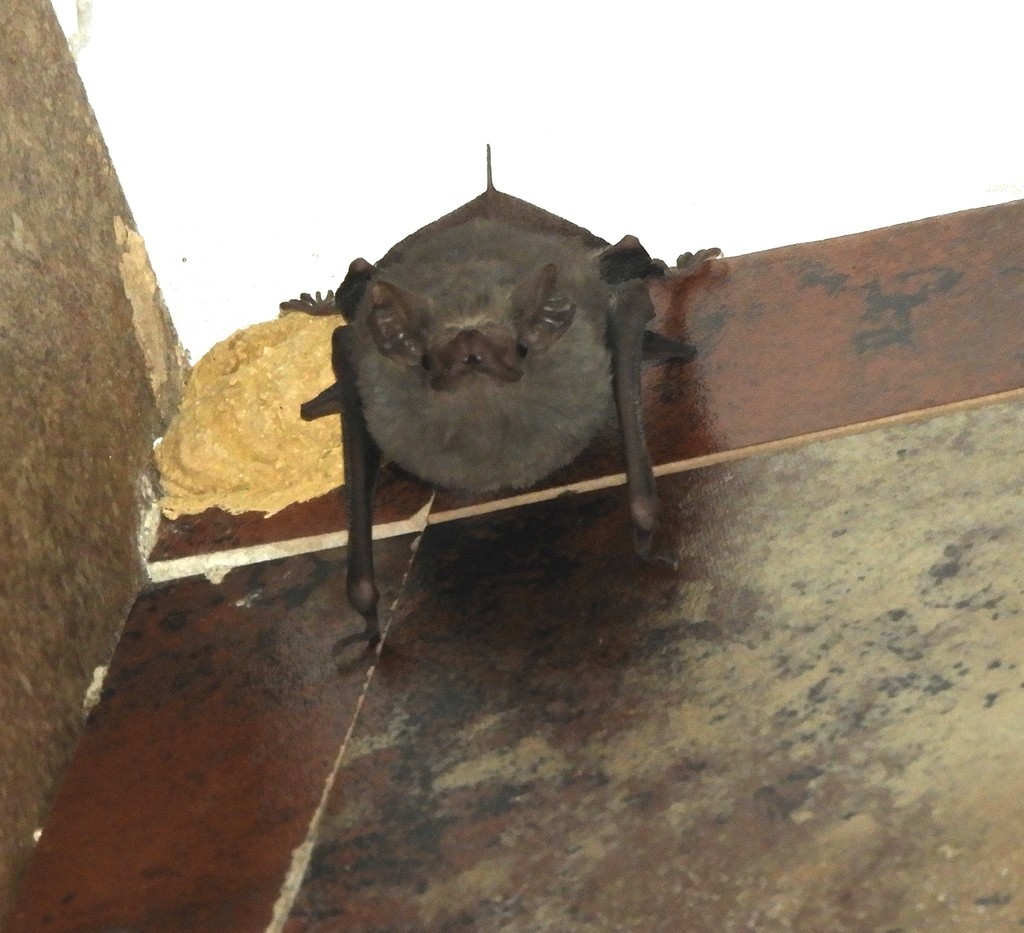Gray sac-winged bat
A species of Sac-winged bats Scientific name : Balantiopteryx plicata Genus : Sac-winged bats
Gray sac-winged bat, A species of Sac-winged bats
Scientific name: Balantiopteryx plicata
Genus: Sac-winged bats
Content
Description General Info
 Photo By francisco3_ , used under CC-BY-4.0 /Cropped and compressed from original
Photo By francisco3_ , used under CC-BY-4.0 /Cropped and compressed from original Description
The gray sac-winged bat (Balantiopteryx plicata) is a species in the family Emballonuridae which comprises the 51 species of sac-winged bats. It is found in Mexico from Baja California Sur and Sonora to Guatemala, El Salvador, Honduras, Nicaragua, Costa Rica and northern Colombia, at elevations up to 1,500 metres (4,900 ft). 
General Info
Lifespan
3-6 years
Diet
Gray sac-winged bat is primarily insectivorous, with a particular preference for moths. Its meticulous hunting technique involves discerning the wing beats of distinct moth species, thereby allowing it to target preferred prey with astute precision.
Appearance
It is known as the gray-sac winged bat first because of the sacs located between the wrist and the neck on the membrane of the wing, which is far more prominent and developed in males than in females. This sac is a defining feature: in this bat, the sac is in the center of the antebrachial membrane, while in others it is not centrally located. There have been reports that the inside of this sac is white, but others have stated that it varies in color and texture depending on the age of the bat and the season. Whichever the case, the sac has a proximal opening. The second reason this bat is known as the gray sac- winged bat is because of its coloring, which can range from the gray color it is known for to a rich brown; despite the differences, all varieties have white trim. It has darker colored fur on its back (dorsal) and lighter covered fur on its front (ventral). The common feature among the family Emballonuridae is the sheath tail, meaning that there is a membrane that stretches from one of the bat's ankles to its other, and the majority of the tail is covered by the membrane, with only the tip protruding. Its wing attaches to its ankle and its tail protrudes approximately 6mm away from its body. The average weight of a male is 6.1 g, and for the non-pregnant female the average weight is 7.1 g; their average body length is 66.6 mm. Unlike in many other bat species, there is no dorsal furrow between the nares, and the rostrum has been described as "inflated". The ears are rounded and the thumb is about 5 mm long (considered long) and thin. 
Behavior
According to the IUCN, the Balantiopteryx plicata is rated as "least concern" because the species has a wide range and usually resides in protected areas. Little is known about the specific numbers of Balantiopteryx plicata, so a population trend cannot be deduced. It prefers to live near the mouth of caves, in barns and other buildings; usually in areas that are open and lit. The bat is sociable and is usually part of a group of fifty or more. It has also been reported that the colony can include up to 10,000 bats. In the colony, there are approximately 25% females and 75% males. These statistics are variable – another source described how the males were more likely to be a part of the colony at the beginning of the dry season around mating time than it is to be near the rainy season; most of the females stayed in one roost while the males left for other roosts. It also prefers to live in dry areas or arid climates rather than wet climates, so it would more likely to be found in evergreen forests rather than swamps. It is necessary to have at least 25% humidity, and preferable to have multiple exits in the structure of the roost. When they roost, they stay about twenty centimeters apart - except when young are present - and they all face the same way. The bats do not seem to be territorial, and also share roosts with other species of bat. This bat is insectivorous, feeding on any insects that are around for that season and are considered "opportunistic foragers." This bat population does not seem to wane from season to season as some other bats do, when a certain food is abundant. Foraging takes place in groups or alone. Both roosting and foraging sites change often. The bat forages over open spaces that are usually "several kilometers" away from the living space. Because of their large colonies, they must have a wider range when hunting for food. While the mothers are away hunting, the young bats stay behind and cling to the wall of the cave or structure in which the colony lives. The bats start hunting a little before sunset, and they fly relatively slowly. It was measured that the males fly at approximately 9.76 km/h and the females fly at about 9.14 km/h. 
Scientific Classification
Phylum
Chordates Class
Mammals Order
Bats Family
Sac-winged bats Genus
Sac-winged bats Species
Gray sac-winged bat